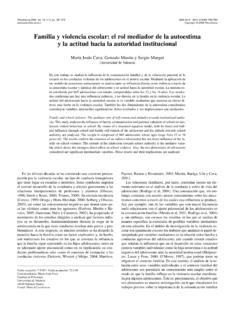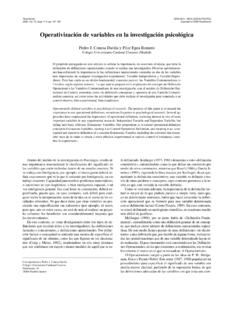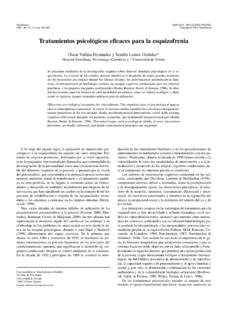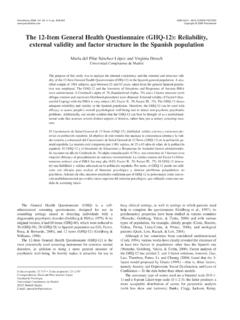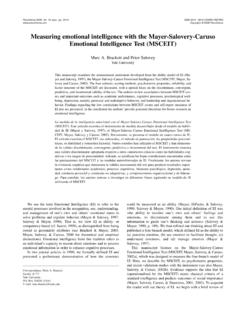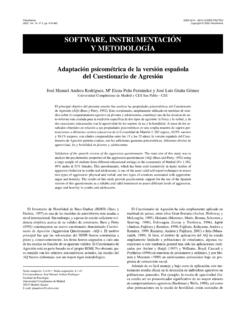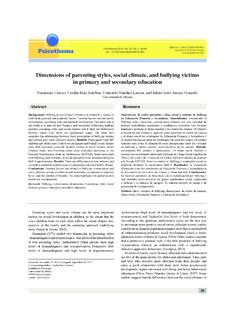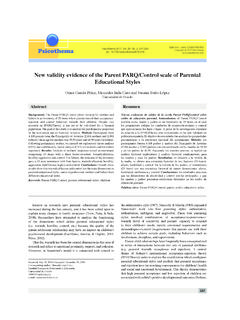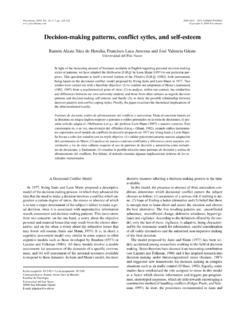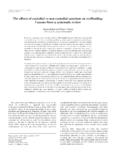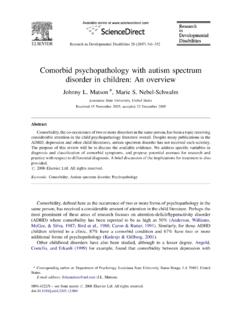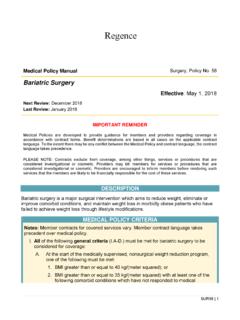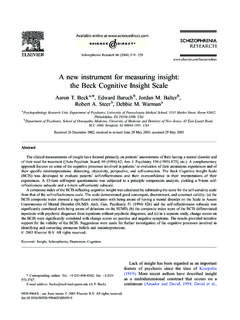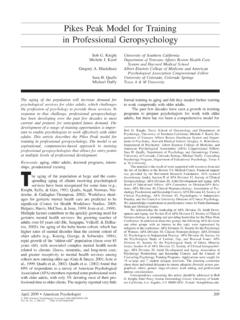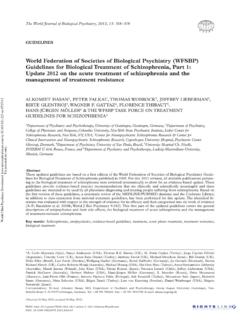Transcription of The SCID-II and DIB-R interviews: Diagnostic …
1 Among the available structured interviews to assess Borderline Personality Disorder (BPD), the Structured Clinical Interview for DSM-IV Axis II Disorders ( SCID-II ; First, Gibbon, Spitzer, Williams, & Benjamin, 1999) and the Revised Diagnostic Interview for Borderlines ( DIB-R ; Zanarini, Gunderson, Frankenburg, & Chauncey, 1989) are the most widely used semi-structured interviews for both clinical and research purposes (major pharmacology trials and psychotherapeutic outcome studies as well as in follow up studies) (Bellino, Paradiso, & Bogetto, 2006; Hollander, Swann, Coccaro, Jiang, & Smith, 2005; Linehan et al.)
2 , 2002; Palmer et al., 2006; Weinberg, Gunderson, Hennen, & Cutter, 2006; Zanarini, Frankenburg, Hennen, Reich, & Silk, 2006; Zanarini, Frankenburg, Hennen, & Silk, 2003). Both interviews diagnose the same construct but there are important differences between them. The SCID-II , based on an atheoretical approach (American Psychiatric Association; APA, 2000), was developed to diagnose all the DSM Personality Disorders. Whereas, the DIB-R is based on a psychoanalytic orientation (Gunderson, Kolb, & Austin, 1981) to diagnose only BPD. Finally, both interviews use different scoring systems.
3 The SCID-II includes the nine DSM polythetic criteria set for BPD. As no specifi c criterion or Psicothema 2012. Vol. 24, n 4, pp. 523-528 ISSN 0214 - 9915 CODEN Copyright 2012 Psicothema Fecha recepci n: 6-7-11 Fecha aceptaci n: 28-3-12 Correspondencia: scar Andi n P rezServicio de Psiquiatr aHospital Universitari Vall d Hebr n08035 Barcelona (Spain)e-mail: SCID-II and DIB-R interviews: Diagnostic association with poor outcome risk factors in Borderline Personality Disorder scar Andi n1,2, Marc Ferrer1,2, Andrea Di Genova1, Natalia Calvo1,2, Beatriz Gancedo1, Josep Matal 3,Sergi Valero1, Rafael Torrubia2 and Miguel Casas1,21 Servicio de Psiquiatr a, Hospital Universitari Vall d Hebr n (CIBERSAM), 2 Departamento de Psiquiatr a y Medicina Legal,Universitat Aut noma de Barcelona and 3 Servicio de Psiquiatr a, Hospital Sant Joan de D uThis study assesses whether patients diagnosed with Borderline Personality Disorder (BPD)
4 According to the Structured Clinical Interview for DSM-IV Axis II Disorders ( SCID-II ) or the Revised Diagnostic Interview for Borderlines ( DIB-R ) present differences in factors associated with risk of poor outcome. Three hundred fi fty-two patients were evaluated with SCID-II and DIB-R . Patients diagnosed as BPD according to one or both instruments were compared in BPD poor outcome risk factors. The analysis was conducted on the participants who were assigned to SCID-II (n = 135) and SCID-II / DIB-R (n = 126) groups. The group diagnosed with BPD according the combined SCID-II / DIB-R interview showed a signifi cantly greater association with risk of poor outcome predictors, such as total number of comorbid Axis II disorders, number of BPD criteria, presence of comorbid paranoid personality disorder, and worse occupational status.
5 No differences between groups were found in the affective instability BPD criterion, self-reported impulsivity, post-traumatic stress disorder, major depressive disorder or presence of any cluster C comorbidity. The observed differences were large enough to advise caution in generalizing fi ndings from studies without considering what measurement was used for the BPD SCID-II y DIB-R : asociaci n del diagn stico de Trastorno L mite de la Personalidad con factores de riesgo de mal pron stico. En el presente estudio se compara si existen diferencias en factores relacionados con mal pron stico en pacientes diagnosticados de Trastorno L mite de Personalidad (TLP) en funci n de si cumpl an los criterios diagn sticos para el trastorno seg n la Entrevista Cl nica Estructurada para los Trastornos de Personalidad del Eje II del DSM-IV ( SCID-II ) o la Entrevista Diagn stica para el Trastorno L mite revisada ( DIB-R ).
6 Se evalu una muestra de 352 pacientes mediante la SCID-II y la DIB-R . Tras el proceso de evaluaci n, dos grupos fueron comparados: el grupo SCID-II (n= 135) y el grupo SCID-II / DIB-R (n= 126). Comparado con el grupo SCID-II , el grupo SCID-II / DIB-R present de forma signifi cativa m s predictores de mala evoluci n, concretamente n mero total de trastornos com rbidos del Eje II, n mero de criterios TLP, presencia de trastorno paranoide de la personalidad com rbido y peor situaci n laboral. No se observaron diferencias signifi cativas en inestabilidad afectiva, impulsividad autoinformada, trastorno por estr s postraum tico, trastorno depresivo mayor o trastornos de personalidad del Cluster C com rbidos.
7 Las diferencias observadas fueron lo sufi cientemente importantes como para recomendar precauci n al generalizar los resultados de aquellos estudios que utilizan uno de los instrumentos a los que usan el otro. SCAR ANDI N, MARC FERRER, ANDREA DI GENOVA, NATALIA CALVO, BEATRIZ GANCEDO, JOSEP MATAL , SERGI VALERO, RAFAEL TORRUBIA AND MIGUEL CASAS524specifi c set of criteria are required for the diagnosis, the SCID-II often leads to a heterogeneous group of patients being diagnosed with BPD. On the other hand, the DIB-R uses a pyramidal scoring system, used to recognize the limitations of and to minimize the weight given to any single observation, question, or other piece of information (Gunderson et al.)
8 , 1981). One of the most important issues in BPD research literature is the poor outcome (Chiesa, Fonagy, & Holmes, 2006; Gunderson et al., 2006; Zanarini, et al., 2006). With this in mind, among the main BPD predictors of poor outcome determined by previous studies, those related to psychiatric history have been: a greater length of previous hospitalizations (McGlashan, 1985), an earlier age of fi rst psychiatric contact (Links, Mitton, & Steiner, 1993; Paris, Brown, & Nowlis, 1987; Plakun, 1991), lower scores on the Global Assessment Functioning Scale (GAF) (Najavits, & Gunderson, 1995), higher number of Axis II diagnoses at follow-up (Links, Heslegrave, & Van Reekum, 1998), comorbid schizotypal, antisocial and paranoid personality disorders (Najavits, & Gunderson, 1995; Links et al.
9 , 1998; Stone, 1990), substance abuse (Links et al., 1993; Stone, 1990), dysphoria (Paris et al., 1987), depression, number of BPD criteria met (Gunderson et al., 2006; Najavits, & Gunderson, 1995), number of bipolar disorder criteria met (Links et al., 1998), suicidal behaviors (Mehlum, Friis, Vaglum, & Karterud, 1994; Stone, 1990), high impulsivity (Links et al., 1993) and affective instability (McGlashan, 1985). Two interesting follow-up studies have recently analyzed variables associated with poor outcome in BPD (Gunderson et al., 2006) and the BPD course predictor variables (Zanarini et al.
10 , 2006). The strongest fi nding of the Gunderson et al., (2006) follow-up study was that poor outcome is directly related to the severity of dysfunction, measured by the GAF, with a greater total number of personality disorder criteria at baseline in BPD patients. The 10 years follow up study of Zanarini et al., (2006) shows an interesting result, the absence of post-traumatic stress disorder and anxious cluster personality disorders alone with good vocational record, are predictors of BPD symptomatology time remission. Despite the wide acceptance of both interviews, the differences mentioned above could infl uence the diagnosis.
